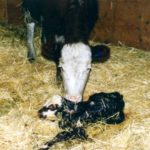
Calving problems are becoming rare, but be prepared to act
Beef 911: The first key step is to note when the birth process starts and investigate if too much time passes

Make sure calves get the colostrum they need
University of Calgary animal health professor offers her tips on how to assess a situation and when to intervene

Managing scours so they don’t manage you
Scours, the most common disease in calves, can quickly put you behind the financial 8-ball

Have a game plan before calving season gets underway
The risk factors that can sicken young calves are numerous but some can be mitigated, says veterinarian

Here’s how to assess the risk when bringing in calves
Beef 911: Mingling animals, transport times, light weights, and even weather can be factors that increase the risk of BRD

Save feed costs by improving body condition scores, says expert
A body condition of 3 can boost pregnancy rates by a third and add 55 pounds to calf weaning weights

Make the most of cheap feed grain this winter
Producers stand to make an additional $130 a head on their calves by supplementing their hay with barley this winter

TB testing to continue into January

We need to do better when it comes to castration
Beef 911: Doing it early and properly brings benefits to the producers, addresses animal welfare concerns, and prevents problems later on

Adjusting cow-calf inventory value can pay off in the future
Making this adjustment during an unprofitable or low-profit year can save taxes when cattle prices go up again

